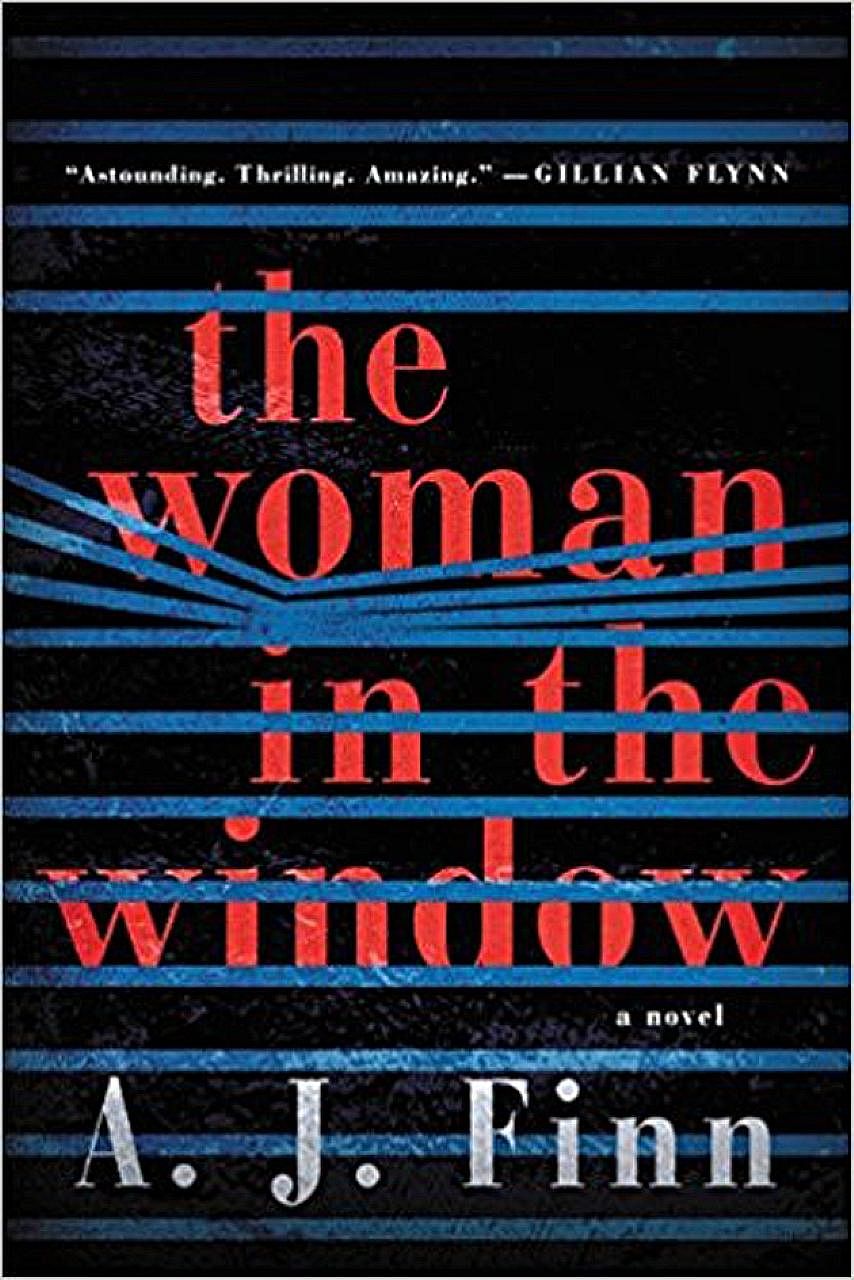When American author A.J. Finn was a child, his parents - for want of a babysitter - dropped him at a movie theatre that was showing Dutch thriller The Vanishing (1988).
"What hypnotised me about The Vanishing, and still does 20 years later, is that there is not a drop of blood, no gore, no graphic violence," says Finn, 38.
"Yet it's absolutely mesmerising and completely terrifying."
This was the kind of terror he sought to reproduce for The Woman In The Window, a suspenseful thriller heavily influenced by director Alfred Hitchcock and the dark menace of film noir, an iconic genre in the 1940s and 1950s.
"Classic noir directors often send their characters scurrying down dark alleys or into dim bars in an effort to escape the world," says Finn over Skype from his home in New York. "But in insulating themselves from the world, they are actually creating prisons for themselves.
"I wanted to stage the action in my book in a single house as a nod to those films. I discovered the hard way, of course, that this required a lot of narrative ingenuity. Only so much can happen within the four walls of a house."
Finn is a pseudonym for Daniel Mallory, a senior editor at William Morrow, the American publishing company that bought the book in a worldwide auction that involved seven-figure offers - without knowing the author was one of its own.

The novel, which has been dubbed the twisted successor to the "grip lit" crown held by Gillian Flynn's Gone Girl (2012) and Paula Hawkins' The Girl On The Train (2015), had its film rights preemptively scooped up by Fox producer Scott Rudin, with a screenplay underway by Pulitzer Prize-winning writer Tracy Letts.
The woman in the novel's window is Anna Fox, a former child psychologist unable to leave her house due to agoraphobia. Separated from her husband and daughter and desperately lonely, she spends her time drinking, chatting online and spying on her neighbours.
One night, she witnesses what she believes is the murder of her neighbour Jane. But nobody believes her; the police tell her the Jane she thought she knew never existed.
Then strange things begin to happen in her own home. Her phone password changes mysteriously. She receives photos of herself taken while she was asleep. Is she in danger or simply going mad?
The Woman In The Window bears an unmistakable resemblance to Hitchcock's Rear Window (1954), in which Jimmy Stewart plays a photojournalist with a broken leg who spies on his neighbours and suspects one of them of murder.
The novel wears its lineage with pride. Anna is a classic movie buff; references to Hitchcock and film noir litter her narrative.
Finn, who in his teens lived a block away from a cinema, is an avid cinephile who hesitates when asked to pick a favourite film noir.
"Les Diaboliques (1955). No, The Third Man (1949). I'll have a different answer for you if you ask tomorrow."
He has also spent his life immersed in crime fiction.
As a teenager, he loved the works of thriller queen Patricia Highsmith, on whom he wrote his doctoral thesis at Oxford University.
Gone Girl may have changed the game for female-led psychological thrillers, he says, but it was Highsmith who pioneered the genre.
It first occurred to him to write a novel while watching Rear Window in his Manhattan apartment, when he noticed a light come on in his peripheral vision. It was his neighbour across the street, who had switched on a lamp in her living room.
"I studied her, as people in Manhattan do," says Finn, who is single. "I thought how funny - and disturbing - it was that I was spying on my neighbour, just as Jimmy Stewart was doing in the movie. And a plot suddenly bloomed in my brain."
Like his character Anna, Finn has struggled with severe depression since he was in university in 2001.
He tried hypnotherapy, talk therapy, meditation and more. Nothing worked for long.
It was not until 2015 that a psychiatrist diagnosed him with bipolar disorder and changed his medication, after which his condition improved enough for him to write.
While the hero of Rear Window is confined to his apartment because of a physical injury, Anna is housebound because of a mental condition, one which Finn says is often stigmatised and misunderstood.
For the novel, he spoke to other agoraphobes online, who shared how frustratingly dull life as a shut-in can be.
"The Internet can provide stimulation, but it's still very isolating."
Though he loves genre fiction and films, he has long been frustrated with their representation of women as femmes fatales or victims.
It is baffling, he adds, that so many "grip lit" novels have gone on to earnestly refer to grown women as "girls" in their titles after the success of Gone Girl, which actually uses "girl" ironically.
"I don't know why female readers put up with being spoken down to by publishers."
While he has no involvement in the film, he is hoping perhaps for a brief cameo, Hitchcock-style.
The director briefly appeared in Rear Window as a man winding a mantel clock in a neighbouring apartment, who turns to stare directly at the camera.
"It might be quite satisfying to wind a clock," he agrees.
• The Woman In The Window ($29.96) is available at major bookstores.


